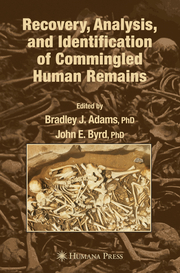Detailansicht
Recovery, Analysis, and Identification of Commingled Human Remains
ISBN/EAN: 9781617377655
Umbreit-Nr.: 987916
Sprache:
Englisch
Umfang: xv, 374 S., 101 s/w Illustr., 374 p. 101 illus.
Format in cm:
Einband:
kartoniertes Buch
Erschienen am 05.11.2010
Auflage: 1/2010
€ 117,69
(inklusive MwSt.)
Nachfragen
